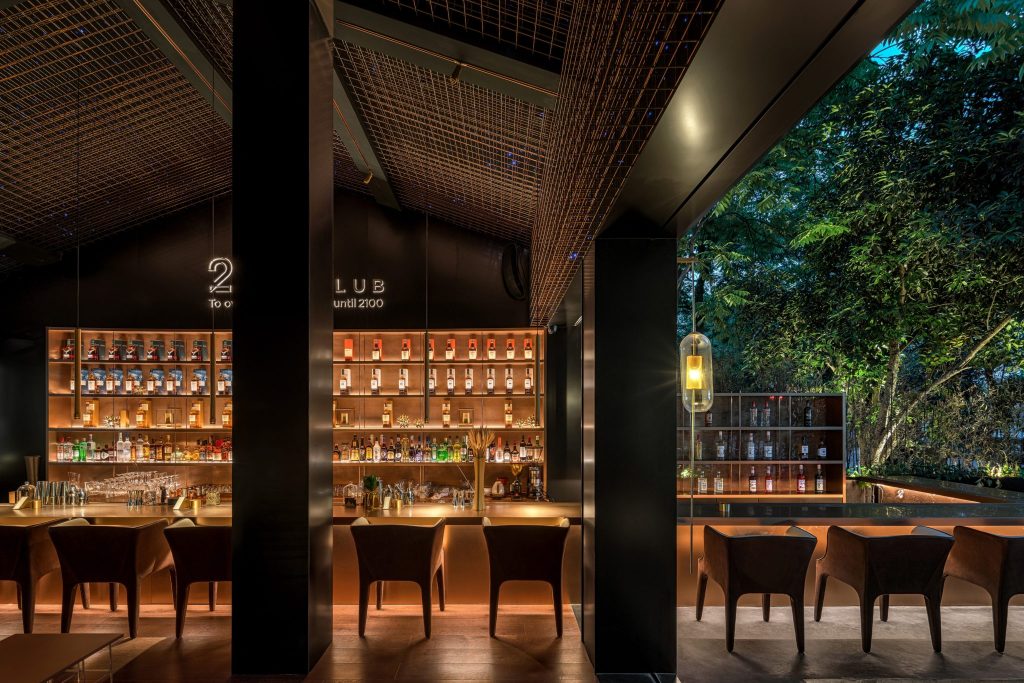Innovating restaurant and bar design ideas make a huge impact on your experience as a food establishment. When you fuse the worlds of food and experience, you’ll get an addictive combination that people naturally gravitate to.
It’s a no brainer. Everyone loves to eat out.
More than enjoying a fantastic made-for-you meal, eating out gives people a reason to get together, connect and escape.
And most of the time? People like to enjoy their food in a beautiful space. Cue the importance of beautiful restaurant and bar design ideas.
See, the thing is, the most successful restaurants always have a unique design concept that makes their bar or restaurant more than a coveted reservation, but a tangible experience too.
Think an old-world, cozy, diner bistro design with banquet-style seating. Or dimly-lit 70’s inspired minimalism with artful wall panelling. Instagram-worthy, modern curved architecture in pastel colour palettes. Ritzy chandeliers paired with chesterfield sofas and brass accents.
Design matters.
With that said, restaurant and bar design ideas are having to become more unique than ever.
Today, we live in a quickly evolving digital world. With more and more consumers choosing fast-food and grocery delivery options, you just can’t outweigh convenience.
For the restaurant world, it needs to be about more than just functional design and great-looking restaurants. For today’s bars and restaurants, it’s all about creating in-real-life moments that are better than just the Instagram highlight reel.
The bar needs to make a statement
For every dining experience, the bar needs to be the centrepiece of the space. You should think about this area in the same way that a hearth space in a home creates a communal, gathering “inviting” experience.
The bar is also the first thing people should see when they walk in.
Additionally, it should also be visible from most of the establishment.
There should be enough space around it to encourage free-flowing movement and accessibility.
We want to encourage people to feel comfortable enough to stand and mingle, as well as properly relax into a seat.
Strategic architects should design the bar space with personal interactions in mind.
Curated glimpses or access to the kitchen staff and chefs can also create fluid transparency in the atmosphere. This dining experience adds excitement and drama.
Reflect on the past
In the 1940s through to the early 1990s, fine-dining spots expressed a sense of luxury through “generous seating, plush interiors and ornate décor. According to Architectural Digest, mid-century modern and clean, sleek minimalism are the trends of the present. That includes high-end, modern décor; cinematically-high exposed ceilings and minimal curtains, upholstery or carpet.
In the same that wall panelling and drop ceilings were all the rage in the 1950s and ’60s. Today, design trends have shifted to more upscale and luxurious spaces.
From vintage speakeasies to luxurious lounges and supper clubs. Restaurants in the 1950s through to the 1970s revealed that interior restaurant designs were opulent and luxe by nature.
Today, this concept of luxury is taken to seemingly more lowbrow spaces with open-kitchens and intimate seating. From fine-dining establishments and speciality restaurants to exclusive lounges, and chic, downtown cocktail bars. We’re seeing interior restaurant designs that are highly ornamented and plush by intention.
Think about design longevity
Time is of the essence, right?
In a future-forward way, restaurant, bar owners and architect firms should constantly be asking themselves how a design concept is going to look and feel 5 to 10 years from now. If something is too of-the-moment and whimsical by nature, your diner’s relevancy might not feel the same in the coming years.
The restaurant and bar design should encapsulate the brand embodiment and bring it to life through functional design.
Trends come and go. Reputation is forever.
Consider large scale events
At most restaurants, the design has been strategically thought out to maximize seating and flexible spaces to accommodate large parties and events.
For an intimate fluidity feel, chefs can be close as they move about, talking to diners about dishes, garnishing plates, and generally interacting with customers during each course.
Envision something out of an uber-traditional dinner party that’s brimming with great conversational flow and glasses chinking in celebration.
Further, in this digital world, more and more restaurants are holding spaces for large-scale events.
Functionality can be built into the design here with flexible wall-panelling integrated into the concept. This can section off spaces of the establishment to be transformed into private dinner parties or other events.
The mobile app movement
While it feels insane to admit, it’s practically critical for restaurant and bar designs to incorporate “Instagram-worthy” moments.
Architects and architect firms are no longer designing just for environmental interaction but for social media interaction too.
Additionally, the mobile app world has drastically changed consumers eating-out habits.
In the past few years alone, there’s been a huge increase in mobile order apps at speciality restaurants and fast-casual spots. As a result, many architects and design firms are beginning to create more mobile order pickup areas into the actual layout of the space.
Many people still eat out “the traditional way” to order and eat on-site.
But a growing number of people are actually transitioning to placing orders online or via a mobile app. There’s no denying that it’s a convenient option to just stop in, pick up their food and go.
Architectural design in any space is exciting. Our best advice to you? Make sure to work with someone who takes the time to really understand your vision.
